
Tomás Cipriano Ignacio Maria de Mosquera y Figueroa Arboleda Salazar, Prieto de Tovar, Vergara, Silva, Hurtado de Mendoza, Urrutia y Guzmán was a Colombian general, political figure, and slaveholder. He was president of Colombia four times. The first time was as president of Republic of New Granada from 1845 to 1849. During the Colombian Civil War of 1860–1862 he led liberal forces in a civil war against conservative factions. After the liberals won, a new, federalist constitution was implemented, which established a two-year presidency, and the nation renamed the United States of Colombia. Mosquera served twice as president of the new government. From 1861 to 1862 he served in a non-elected, interim manner, while the constitution was written. From 1862 to 1864 he served in an elected manner. He had a fourth term from 1866 to 1867. Due to the liberal reforms carried out under his leadership, he is considered one of the most important persons in Colombian history of the 19th century.

Manuel Murillo Toro was a Colombian statesman who served as President of the United States of Colombia on two occasions, first from 1864 to 1866, and again between 1872 and 1874.
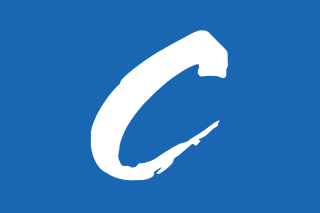
The Colombian Conservative Party is a conservative political party in Colombia. The party was formally established in 1849 by Mariano Ospina Rodríguez and José Eusebio Caro.

The United States of Colombia was the name adopted in 1863 by the Constitución de Rionegro for the Granadine Confederation, after years of civil war. Colombia became a federal state itself composed of nine "sovereign states.” It comprised the present-day nations of Colombia and Panama and parts of northwestern Brazil. After several more years of intermittent civil wars, it was replaced by the more centralist Republic of Colombia in 1886, predecessor to modern Colombia.
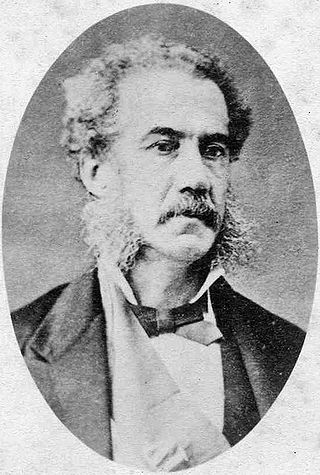
Julián Trujillo Largacha was a Colombian lawyer, statesman, General of the Army and President of Colombia from 1878 to 1880.

The Granadine Confederation was a short-lived federal republic established in 1858 as a result of a constitutional change replacing the Republic of New Granada. It consisted of the present-day nations of Colombia and Panama and parts of northwestern Brazil. In turn, the Granadine Confederation was replaced by the United States of Colombia after another constitutional change in 1863.
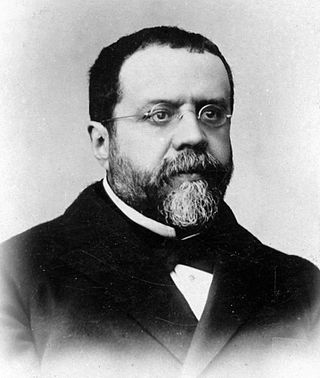
Miguel Antonio Caro Tobar was a Colombian scholar, poet, journalist, philosopher, orator, philologist, lawyer, and politician.

Ramón González Valencia was a Colombian conservative, military officer and statesman. He participated in the civil wars of 1876, Colombian Civil War of 1895, and the Thousand Days War.

José Eliseo Payán Hurtado was a Colombian lawyer, politician, and military officer. Payán as Vice President of Colombia assumed the Presidency of Colombia because of the absence of President Rafael Núñez in 1887.
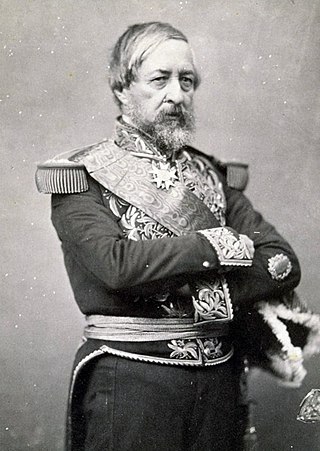
José Hilario López Valdés was a Colombian politician and military officer. He was the President of Colombia between 1849 and 1853.

The Colombian Civil War began on 8 May 1860 and lasted until November 1862. It was an internal conflict between the newly formed conservative Granadine Confederation and a more liberal rebel force from the newly seceded region of Cauca, composed of dissatisfied politicians commanded by General Tomás Cipriano de Mosquera, its former president. The Granadine Confederation, created a few years earlier in 1858 by Mariano Ospina Rodríguez, was defeated in the capital Bogotá, with Mosquera deposing the newly elected president Bartolomé Calvo on July 18, 1861. Forming a provisional government, with himself as president, Mosquera continued to pursue the conservative forces until their final defeat in 1862. The resulting formation of the new United States of Colombia would have significant cultural and economic consequences for Colombia.

Bartolomé Calvo Díaz de Lamadrid was a Colombian lawyer, journalist, and statesman, who became President of the Granadine Confederation, in what is now Colombia, in 1861 in his role as Inspector General, because no elections were held on that year to decide the presidency. He also served as Governor of Panama and Ambassador to Ecuador, and worked in a number of newspapers.
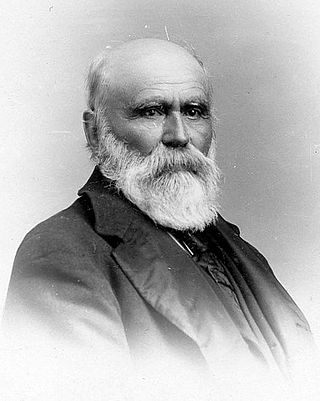
José Bonifacio Aquileo Elias Parra y Gómez de la Vega was a Colombian soldier, businessman and political figure. He was the President of Colombia between 1876 and 1878.
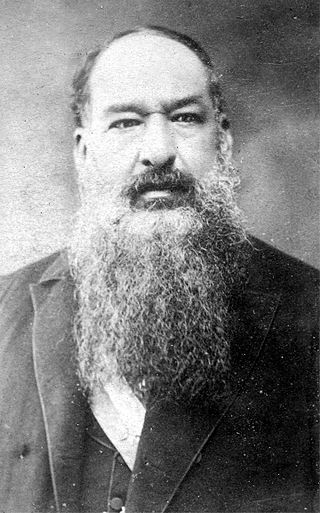
Ezequiel Hurtado Hurtado was a politician, military general and statesman who became President of Colombia. He was born in Silvia, in the department of Cauca, December 14, 1825, and died in Popayán, September 4, 1890. His parents were Nicolas Hurtado and Maria Trinidad Hurtado. He went to school at Colegio San Jose and then studied law at the University of Cauca, where he graduated on January 27, 1852. He subsequently became a University lecturer in law.

Rafael Victor Zenón Uribe Uribe was a Colombian lawyer, journalist, and general in the liberal party rebel army.

Carlos María Holguín Mallarino was a Colombian lawyer, journalist, and politician, who became Acting President of Colombia between 1888 and 1892, acting in the absence of President Rafael Núñez.

States of Colombia existed from February 27, 1855, in the Republic of New Granada and the Granadine Confederation, where they were called "federal states". In the United States of Colombia they were called "sovereign states".
Presidential elections were held in the United States of Colombia in 1875 and 1876. The electors were elected in 1875 and elected the president the following year. The result was a victory for Aquileo Parra of the Liberal Party.

Manuel María Ramírez Fortoul was a Colombian lawyer and politician, who was President of Colombia from 22 December 1877 to 24 December 1877 as a designate, while President Aquileo Parra Gómez was away.
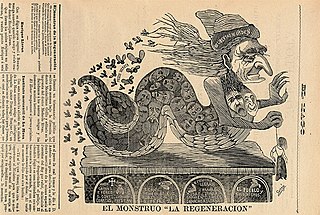
The Regeneration was a political movement that emerged in Colombia in the late second half of the 19th century, led by Rafael Núñez. Its goal was to reverse the social and legal implications of the Radical Olympus era of the 1863 Constitution of Rionegro which established the United States of Colombia, made the country a federal republic and enforced the separation of church and state. The motto of Regeneration was "one nation, one goal, one God".



















